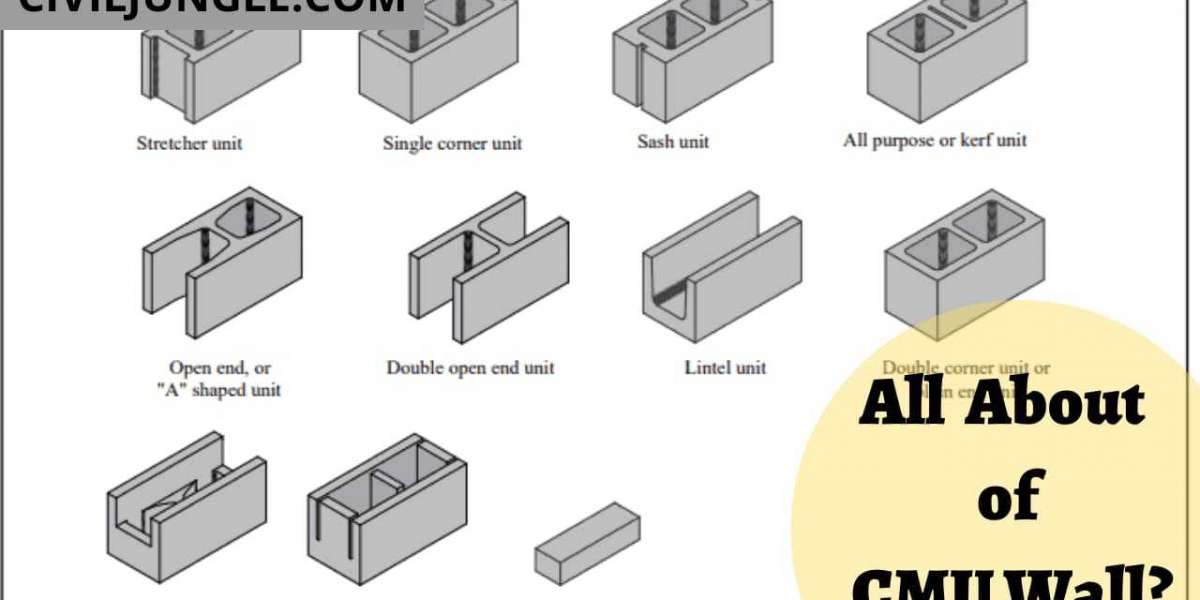What Is A CMU Wall?
CMU Wall stands for Concrete Masonry Units Wall are environmentally green and versatile building materials which can be used in many different applications.
The blocks are available in a range of shapes and sizes They can be used to create a beautiful design for exteriors or to create interest in interior walls.
CMU blocks utilized in the construction could help in its designation as green "green" building.
CMU Wall Details (CMU Block)
CMU blocks are made of Portland Cement, Aggregates and water. As a building material CMU blocks provide a number of appealing features to builders and designers such as:
- Durable
- Installation is simple and easy to do
- Fireproof
- Low maintenance
- Decorative finishes available
- Ornaments after installation
Also Read: Coarse Aggregate
CMU Block Dimensions
CMU blocks are made in various sizes. They can be distinct by their depth, i.e. the depth of the walls they construct. For example the thickness of CMUs that measure CMU of 6'' CMU can be considered to be 6'' in depth and 10" CMU has a nominal thickness of 10'' in depth.
They also come in half-sizes. They help in decreasing the need to cut blocks at the corners or at the top of walls.
The architect will always try to design buildings with the nominal dimensions of the closest half-block size in order to lessen the waste and work required cutting blocks.
The nominal and real sizes that are available for CMU blocks are listed in the table below. With CMU blocks with sizes of 4", 6'' 10'' and 12" are the most common sizes, however some manufacturers also offer additional sizes that aren't listed below.
Standard CMU Block Wall Detail
CMU producers must adhere with ASTM standards when making concrete blocks. The standards define the appropriate materials as well as compressive strength and dimensional tolerance, as well as water absorption, as well as other characteristics of performance.
Concrete bricks are made of concrete that is similar to concrete block However, concrete bricks are made in dimensions that are comparable to the traditional clay bricks (i.e. 2 2/3'' tall).
The table below provides ASTM standards applicable to CMUs made of concrete. ASTM C90 covers most conventional CMU construction it is also the norm used by the ICC codes.
CMU Block Weight
The mass of CMU blocks is dependent how dense the mix of cement being used.
There are three types of CMU:
1.) CMU Blocks that are lightweight weigh under 105 pounds/ft3.
2.) The weight is medium. CMU Blocks are characterized by weights between 105 lb/ft3 to 125 pounds/ft.
3) CMU Blocks of normal weight is a weight greater than 125 pounds per cubic foot.
Lighter CMUs are more affordable and require less effort for installation, and generally offer better fire-resistant properties.
Larger units can reduce the transmission of sound, possess greater compressive strengths, and also have a greater storage capacity for thermal energy. However they're more expensive and are more expensive to set up.
Architects need to provide the CMU weight, if a specific weight is needed.
Also Read: Types of Kitchen Sink
CMU Blocks Compressive Strength
It is CMU bricks and walls made of masonry' compressive strength can vary from about 1000 psi (7 MPa) to 5000 pisi (34 MPa) dependent on the concrete type used in the production of the block, as well as the quality of the mortar that is used.
CMU Wall Construction
The majority of walls constructed using CMUs adhere to the same principles but the way they are applied to the elements may vary in relation to the size or shape and usage for the wall.
Foundation. All CMU walls need to be placed on a solid and sturdy foundation of concrete poured. The depth and the size of the foundation will depend on the dimensions that the wall is constructed of concrete, as well as the weight it has to be able to support.
However, in general the depth of foundation should be at least two times as wide as the wall itself. It should also extends approximately 1 foot to the line of frost.
CMU block. The block shape and size is usually based on the purpose of the wall as well as the layout that the wall will have.
The majority of CMU walls are constructed using types of blocks, notably corner units and stretchers. Mortar joints.
Each joint is joined to the adjoining blocks using either the type S or type N (above grade) or type S (below grade) mortar.
For stronger walls, they are built in a way they have vertical joint off (staggered) in one direction to another.
A freestanding reinforced wall isn't robust enough to withstand the strains that can break joints and cause damage to walls. Therefore, both vertical and horizontal reinforcement is typical.
Vertical reinforcement , in the shape of straight-length steel bars are embedded in concrete that can be poured in block cavity at intervals that are set by the manufacturer.
Horizontal reinforcement comes in the form of strips of steel inserted into the mortar that has been wet three or four courses of block.
The majority of CMU houses are constructed with single-wythe walls. This means that they are built from single-wide rows of block stacked one on top of one another.
If there is the need for greater strength, you can build double-wythe walls. These are walls where two blocks are laid out.
Also Read: Sill Height





